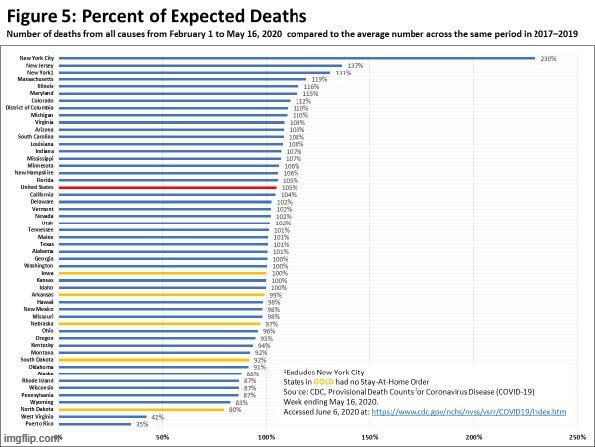I think possibly the best way to estimate/check what is being reported is to examine a comparison of deaths from all cause in prior year to deaths in 2020.
Reposting from previous finding:
SOURCE: https://childrenshealthdefense.org/news/lessons-from-the-lockdown-why-are-so-many-fewer-children-dyin
Before mid‐March, overall U.S. deaths were trending at a level no different from recent years at between 55‐60,000 per week.
Beginning in the week ending on March 28, all;cause deaths began rising sharply, peaking in the week ending April 11 at around 75,000, or 137% of Expected Deaths for the week. Immediately thereafter, all-caused deaths began dropping sharply.
Within five weeks, all‐cause deaths were back to their typical range. By the week ending May 16, the measurable pandemic death impact had ended even though Covid19;related deaths most certainly had not.
At least in this ;week period, the Covid19 pandemic was considerably worse than a typical flu season. To the extent that all;cause deaths fell back to expected levels during May, the excess mortality attributable to the pandemic has passed.
Many states actually saw lower than expected deaths during the period. To be sure, an excess death rate of 5% for the entire U.S. is considerable but also far short of the apocalyptic narrative the pandemic has received.
Variation by policy environment To the extent that policies have varied across the states, it is not clear that the imposition and/or presence of stringent lock‐down policies had much to do with the variation in excess deaths. Less stringent lockdown policies were not associated with higher death rates.
In fact, the 5 states that chose not to impose a lockdown are among the roughly 20 jurisdictions with no excess deaths at all. ...snip...
Somehow, the changing pattern of American life during the lockdowns has been saving the lives of hundreds of infants, over 200 per week.
